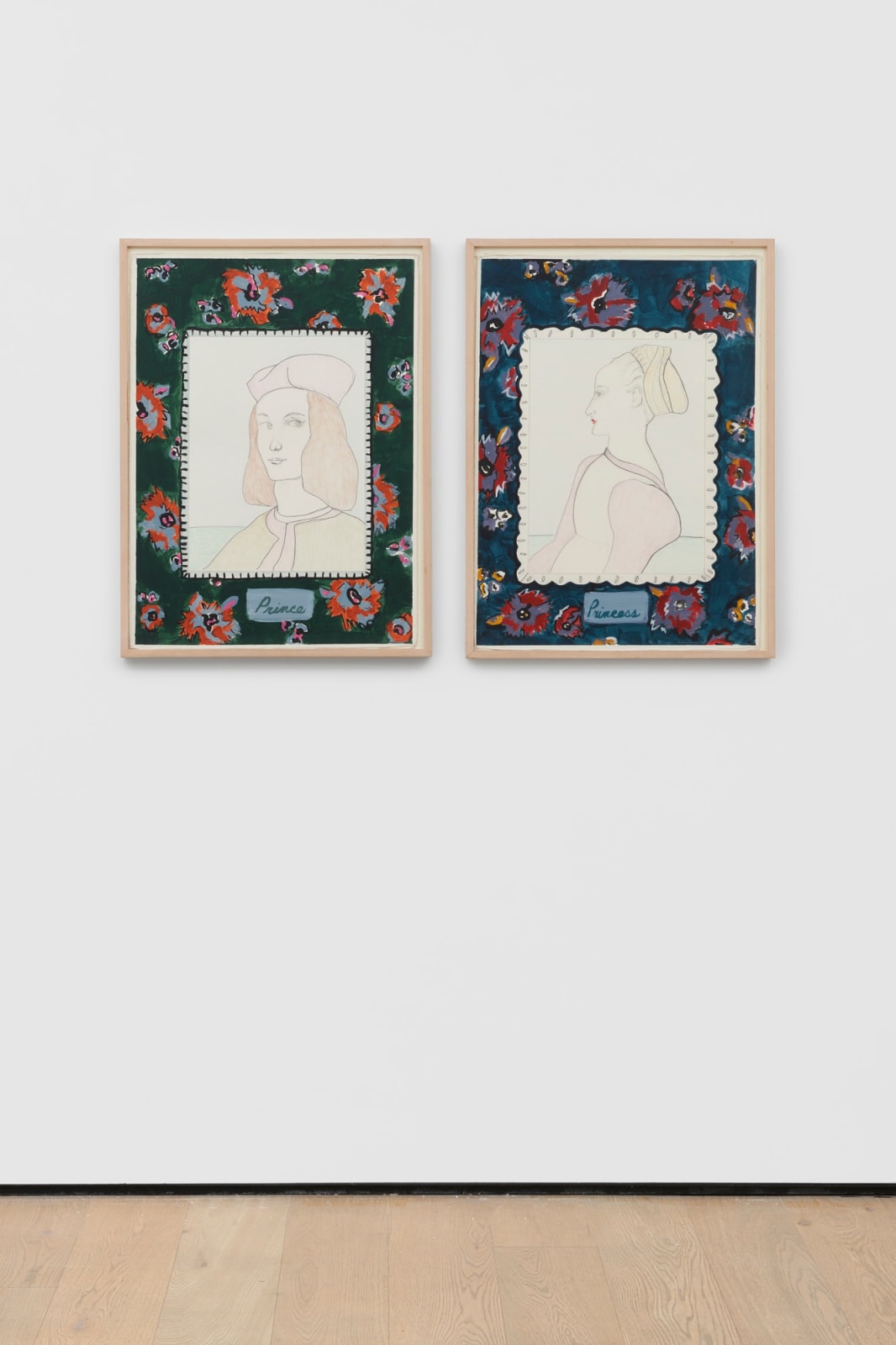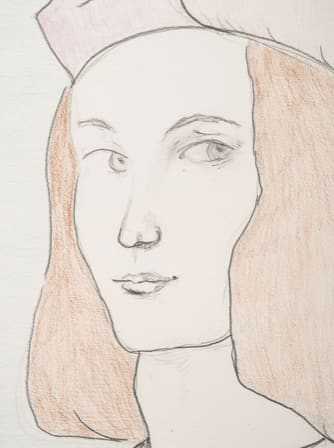Ree MORTON American, 1936-1977
Further images
Created a year before her untimely death, the 1976 diptych Prince and Princess from the larger installation series Signs of Love is a signature work that shrewdly demonstrates unique ability to visually critique unrealistic cultural ideals, disarmingly yet directly. In this case the fairy tale is the target of her commentary, specifically the fanciful, prince charming dependent notion of perfection that is happily ever after. Morton borrows the regal compositions of Renaissance portraiture to represent her romantic archetypes specifically Raffaello Sanzio’s Portrait of Pietro Bembo serving as source for prince and Antonio del Pollaiuolo’s Profile Portrait of a Young Lady providing the inspiration for princess. Self-consciously stylized and simplified, these contemporary renderings of classical representations of royalty have the apparent sanitized comfort of Disney’s take on the fairytales true love resolution, while revealing with subtle satire the bleaker moral, that wolves, bluebeards and ogres are more common fates for damsels in distress than saviors.
Presented as a pair, a couple, it is no accident that they are two separate works on paper with telling and loaded sight lines. The princess sits in profile her gaze fixed on her hero, she can be admired by all but is limited to admiring her better half, the prince in three quarter view, glances sidewise at his mate simultaneously free to meet the eyes of the viewer and able to admire a world of options beyond while secure in knowing he is the singular object of her admiration. Each beautiful objects, emblematic like playing cards, he and she are both symbols of character generalities perpetuated by childhood fiction, the rules of the game and the resulting conclusion, drastically different depending on the gender dealt the hand. Illusionistic threads stitch the respective his and her portraits to loosely painted green and red faux floral fabric backgrounds, at once a decorative framing device while conceptually tying the work to a domestic realm, further reinforcing the fallible sentimentality of the happy home, happy ending mythology. In all, Prince and Princess sophisticatedly draws attention to the trappings of the folkloric formula for happiness, in turn offering hope that the signs of love could not be just presubscribed constants, but rather an evolving and mysterious multitude as varied as the individuals witnessing the signs. Beyond the myriad formal, conceptual, technical and compositional attributes that make this work an extraordinary specimen of Morton’s peak output, it was significantly included in her posthumous 1980 retrospective Ree Morton: Retrospective 1971-1977, organized by Alan Schwartzman and Kathleen Thomas for the New Museum in New York City, ultimately traveling the country with stops at institutions in Houston, Boulder, Buffalo and Chicago.
Exhibitions
Ree Morton: Something in the Wind, Alexander and Bonin, New York, US, 15 October - 22 December 2016Ree Morton: A Retrospective 1971 - 1977, New Museum, New York, US, 16 February - 17 April 1980; Contemporary Arts Museum, Houston, US, 20 May - 29 June 1980; Boulder, University of Colorado Museum, Boulder; Buffalo, US, 17 January - 1 March 1981; Albright-Knox Art Gallery, New York, US; Renaissance Society at the University of Chicago, Chicago, US, 15 March - 19 April 1981









